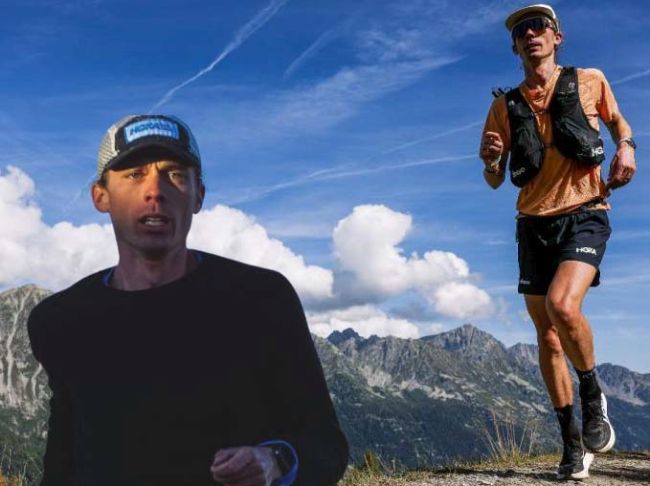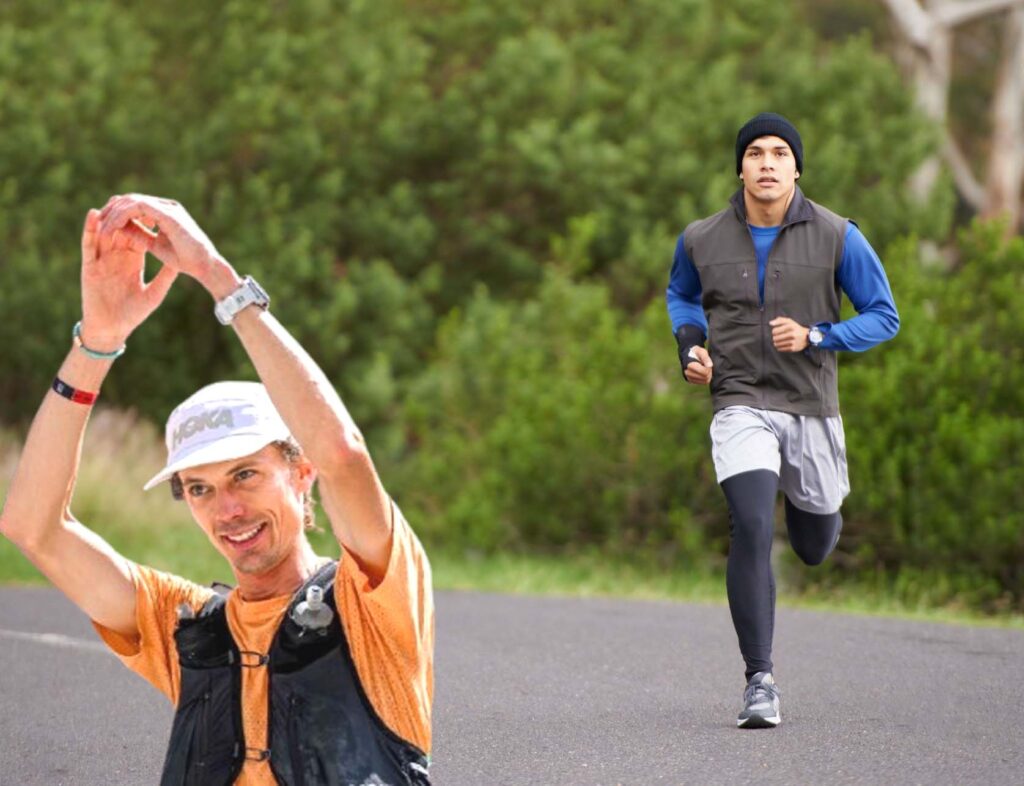Jim Walmsley openly admits he’s never been one to sit still or enjoy downtime. That restless energy is exactly why his career has led him to run up to 140 miles each week—often on steep trails and rugged hills.
“I’ve always been an overly active person,”
Walmsley explains. “I need to be moving, doing something.”
Fortunately for the world-renowned endurance runner, he’s back to doing what he loves most. After dealing with a nagging knee injury that sidelined him, Walmsley has finally returned to full training mode.
With the issue now seemingly behind him, he has been steadily increasing his mileage in preparation for the upcoming World Mountain and Trail Running Championships in Spain and the Pyrenees this September. The return not only improves his competitive fitness but also lifts his overall mindset.
“I get to take on longer runs that lead me to incredible places,
and that’s brought me back to a really enjoyable phase of my relationship with running,” Walmsley shared with CNN Sports.Noticing my steady improvement once more feels incredibly fulfilling.
For Jim Walmsley
widely recognized as one of the world’s greatest ultrarunners, the sport has always symbolized more than just a career or a pastime—it embodies passion, purpose, and a way of life. It became both a passion and a lifeline, offering him a way to cope during the most difficult chapter of his life.
After graduating from the Air Force Academy, Walmsley was assigned to Malmstrom Air Force Base in Great Falls, Montana. There, he worked grueling 24-hour shifts underground as a nuclear missile officer—a job that left little room for balance, let alone running.
Although he had competed in track and cross-country during high school,
his demanding schedule made it hard to stay connected to the sport. Still, whenever time allowed, Walmsley would head out into the rugged Montana wilderness for long, soul-clearing runs.
“Once I joined the Air Force, I honestly thought my running career was over,” Walmsley admits.
Walmsley’s time in the military
was cut short unexpectedly. His discharge followed a cheating scandal during a proficiency test at Malmstrom, compounded by an earlier DUI offense. While it marked the close of his Air Force chapter, it also set the stage for Walmsley’s transformation into one of the most dominant figures in ultramarathon and trail running today.
In the years that followed his discharge from the Air Force, Jim Walmsley’s mental health took a sharp decline, leaving him struggling with depression and even suicidal thoughts. Even now, nearly a decade later, the memories of that dark period remain difficult for him to revisit.
“I try not to dwell on it too much,”
Walmsley admits. “That chapter of my life can still be triggering, so I prefer focusing on the present. It’s mentally healthier for me not to relive it.”
Seeking professional help marked a turning point. After moving to Flagstaff, Arizona, Walmsley began working at a local bike shop—a shift that unexpectedly reignited his passion for running. With a consistent training schedule, he found comfort in building daily routines: each completed run naturally flowed into planning the next one.
“This was when life began to feel more stable again,” Walmsley recalls. “After being discharged from the Air Force and facing setbacks, running became the bright spot. It gave me joy, it gave me purpose, and it was something that offered positive reinforcement when most other areas of life didn’t.”
Walmsley explains that consistency was the key to rebuilding his stability. By refusing to let rest days spiral into long breaks, he developed a disciplined rhythm. Soon, this lifestyle became second nature—and even addictive.
“It’s probably a sign that I was destined for ultrarunning,”
he reflects. “People in this sport tend to overcommit, and I threw myself completely into it. Running became part of my identity and daily routine once again.”
Ultrarunning—generally described as any race that goes beyond the classic 26.2-mile marathon—is widely viewed as a sport of its own, distinct from standard distance running.
These extreme endurance races
are typically held in some of the world’s harshest environments—towering mountain ranges, scorching deserts, and icy trails—pushing runners to the very limits of their physical stamina and mental toughness. and mental resilience. In ultrarunning, endurance and suffering are inseparable companions.
Within this unique community of endurance athletes, Jim Walmsley’s journey stands out. Unlike many ultrarunners who start directly on the trails, Walmsley built his foundation in track, road racing, and cross-country.
His versatility was on full display in 2020 when he temporarily shifted gears from ultrarunning to chase Olympic ambitions, competing in the U.S. Olympic Marathon Trials, where he finished an impressive 22nd.
Still, it is on the trails and in ultradistance events where Walmsley has truly cemented his legacy.
He once held the world’s best 50-mile record with a blistering time of 4:50:08, and he is a four-time champion at the legendary Western States 100, a 100-mile race through California’s Sierra Nevada Mountains. Along the way, he also claimed the coveted course record, further solidifying his dominance in the sport.
That early misstep, however, only fueled his determination. Since then, few mistakes have been as costly, and Walmsley has continued to elevate his career.
By 2018, shortly after signing with global sportswear brand HOKA, his reputation in the ultrarunning world soared—transforming him from a rising athlete into one of the sport’s most recognizable champions.
Beyond his unmatched success at the Western States 100,
Jim Walmsley has etched his name into history as the course record holder and the first—and so far only—American man to win the Ultra-Trail du Mont-Blanc (UTMB). He calls UTMB “basically the biggest prize you can win in trail running,” and for good reason.
The UTMB is widely regarded as one of the toughest and most prestigious ultramarathons on the planet. Covering nearly 108 miles around Mont Blanc—the tallest peak in Europe—the race pushes athletes through demanding alpine trails that stretch across France, Switzerland, and Italy.
Participants must conquer an incredible 9,900 meters (32,480 feet) of elevation gain, exceeding Mount Everest’s height by more than 1,050 meters.
For Walmsley, mastering such brutal courses has required a complete transformation. Having grown up on the flat, predictable surface of a 400-meter track, he quickly realized that ultrarunning demanded new strategies—and a lot of patience.
“Coming from American running culture set me up with certain misconceptions,” Walmsley admits. “It often made me too impatient for ultrarunning.”
Over time, however, Walmsley adapted.
He learned that power hiking steep climbs can actually be faster and more efficient than running. He mastered the art of fueling consistently—eating small amounts often—even when nausea made it difficult.
And perhaps most importantly, he trained himself to slow down, resisting the urge to surge forward with the powerful, flowing stride that once defined his track career.
Now, Walmsley sees ultrarunning as an entirely different sport compared to the races he ran in high school and college. Having left the limitations of the track behind,
he has evolved into a seasoned ultratrail runner, embracing the awe, intensity, and unforgiving demands of full-day mountain endurance races.
Jim Walmsley on the Beauty and Challenges of Ultramarathons
When asked about the appeal of ultra-distance races, Jim Walmsley reflects deeply on the experience.
“Twenty-four hours is a really long, yet beautiful length of a race because you’re racing one day, one rotation of the Earth,” he says.
For Walmsley, the essence of ultrarunning lies in its shared struggles. “Something unifying throughout every participant in the sport is that we all go through moments of doubt and questioning,”
he explains. “But that’s where motivation and the drive to finish come from. The simplicity of focusing only on moving forward makes the experience powerful—it brings you into the present in a way that feels very human.”
Competing at UTMB: From Setbacks to Strategy
Walmsley, who competed at UTMB in 2017, had planned to take on the full 100-mile race again in 2024. However, a lingering knee injury—worsened during a 120-kilometer (75-mile) race in Chianti, Italy earlier in the year—forced him to adjust his plans.
Instead of the main event, he will line up for the OCC (around 37 miles) on August 27. This race starts in Switzerland and finishes in Chamonix, France,
the famous alpine resort that hosts UTMB week each year. While he’s disappointed to miss the longer distance, Walmsley emphasizes that protecting his long-term health is the bigger priority.
Readmore Leeds top spot with win past Oxford United after Solomon 2025
Living in Chamonix and Planning for the Future
Living in Chamonix, Walmsley finds it difficult to miss the iconic race that defines ultrarunning—a competition where he etched his name into history in 2023. Still, he remains focused on protecting his career by not allowing injury to take control.
“I’m not very good at not racing, and I always prefer to be on the start line,” says the 35-year-old. “But this year, I’m more concerned about regressing. I’d rather be healthy and back at UTMB next year than push through and reset the injury.”
His perspective highlights one of ultrarunning’s most important lessons: patience. It’s a virtue he’s leaned on countless times throughout his career, and now, it’s helping him focus on healing so he can continue chasing new goals.
Running Beyond Competition
Even when his professional career eventually winds down, Walmsley insists he has no intention of ever stopping. Running, he says, is part of who he is.
“I would like to hope that I’ll be a lifetime runner,” Walmsley reflects. “I’ve learned that it helps me a lot mentally to keep moving. Running is something I’ll carry with me forever.”


